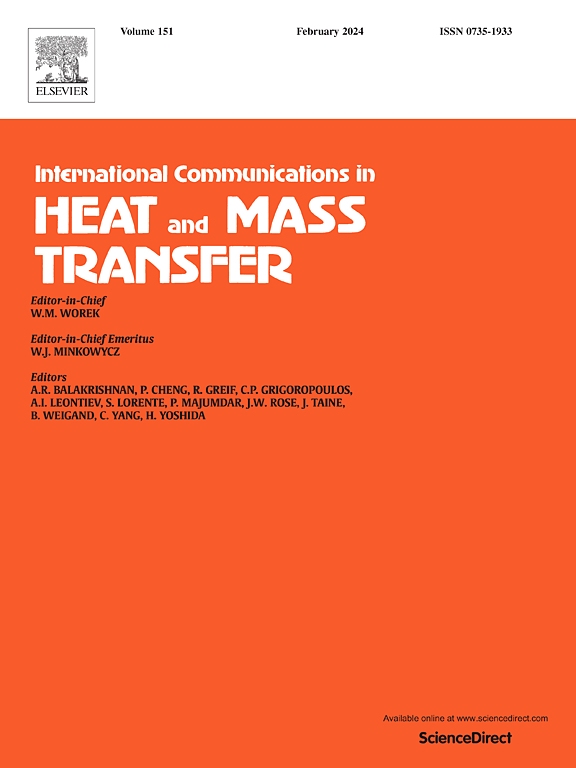Comparative analysis on heat transfer and flow-induced vibration of rotating cylinders with different degrees of freedom
IF 6.4
2区 工程技术
Q1 MECHANICS
International Communications in Heat and Mass Transfer
Pub Date : 2025-04-03
DOI:10.1016/j.icheatmasstransfer.2025.108915
引用次数: 0
Abstract
Rotational dynamics and vibration dynamics are fundamental elements in engineering. Investigating the hydrodynamic response and convection of a flow-induced vibrating circular cylinder with rotation holds significant importance. This study numerically investigated mixed convection with a forced, anticlockwise rotating cylinder, considering single-degree-of-freedom (1DOF) and two-degree-of-freedom (2DOF) flow-induced vibrations under uniform flow conditions. The simulations explore rotation rates (α) from 0 to 1.5 and reduced velocities (U*) from 3 to 12 at a Prandtl number (Pr) of 7.1. The study assumes constant fluid properties, except for density, which is modeled using the Boussinesq approximation. The results reveal distinct behaviors between 1DOF and 2DOF vibrating cylinders under rotation conditions. The peak transverse amplitude ratio remains relatively consistent for 1DOF cases, regardless of rotation rate, while the 2DOF cases exhibit significant reduction at high rotation rates. As the rotation rate increases, the vibration equilibrium position shifts upward due to the Magnus effect. Notably, 2DOF cylinders exhibit higher sensitivity to changes in rotation rate compared to 1DOF cases. Hydrodynamically, 2DOF configurations demonstrate reduced lift coefficient fluctuations and a more pronounced decrease in average drag coefficient compared to 1DOF cases. For 2DOF cylinders, a maximum reduction of 20 % in average Nusselt number is observed, though rotation effectively mitigates local surface overheating. The wake structure transitions from 2S to D pattern with increasing rotation speed, significantly influencing temperature field distribution and heat transfer characteristics.
求助全文
约1分钟内获得全文
求助全文
来源期刊
CiteScore
11.00
自引率
10.00%
发文量
648
审稿时长
32 days
期刊介绍:
International Communications in Heat and Mass Transfer serves as a world forum for the rapid dissemination of new ideas, new measurement techniques, preliminary findings of ongoing investigations, discussions, and criticisms in the field of heat and mass transfer. Two types of manuscript will be considered for publication: communications (short reports of new work or discussions of work which has already been published) and summaries (abstracts of reports, theses or manuscripts which are too long for publication in full). Together with its companion publication, International Journal of Heat and Mass Transfer, with which it shares the same Board of Editors, this journal is read by research workers and engineers throughout the world.

 求助内容:
求助内容: 应助结果提醒方式:
应助结果提醒方式:


